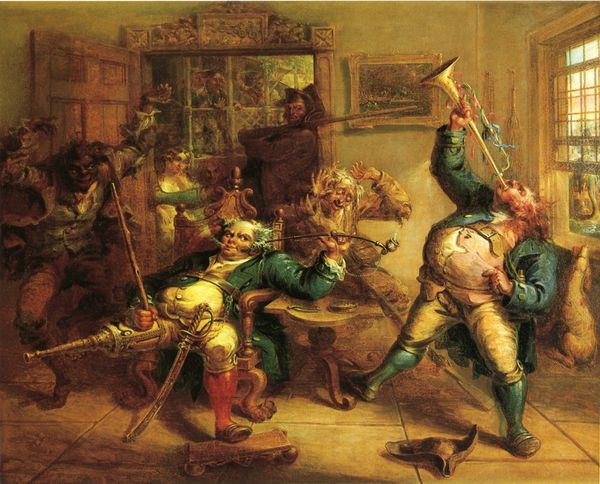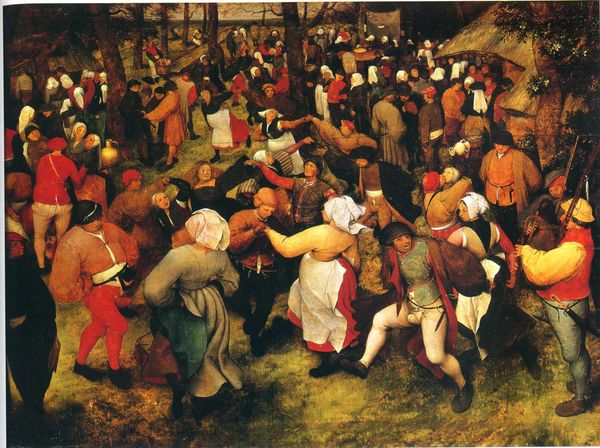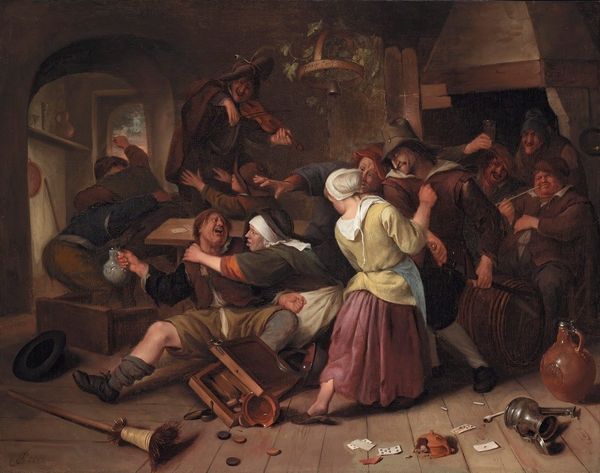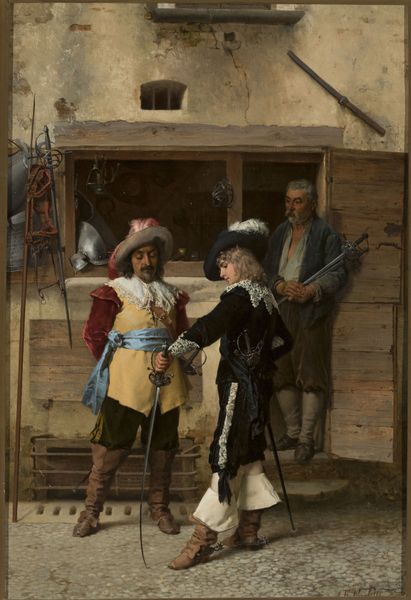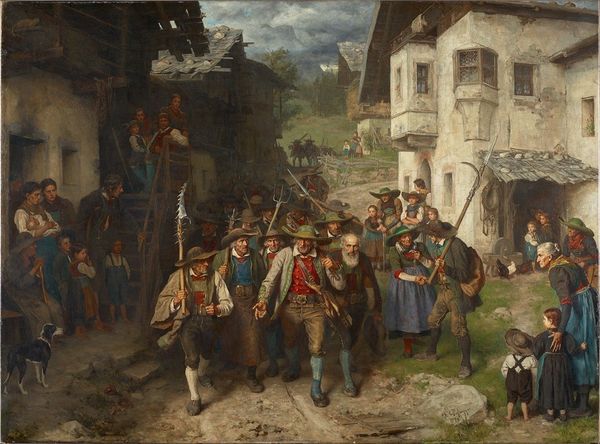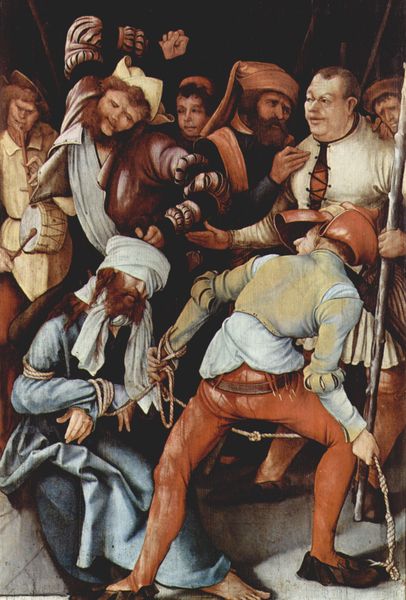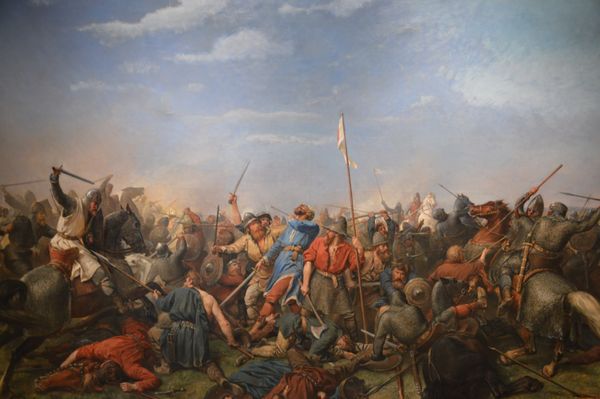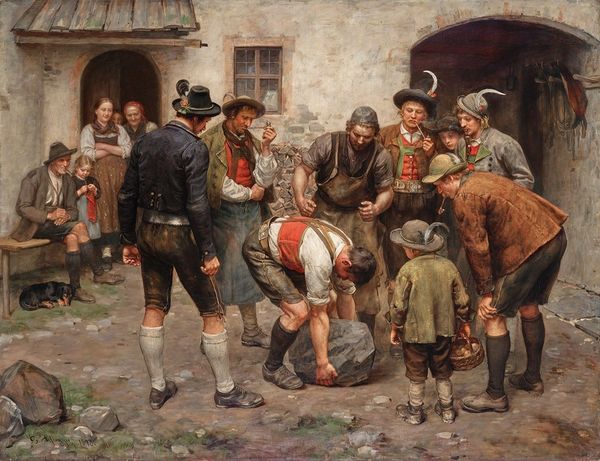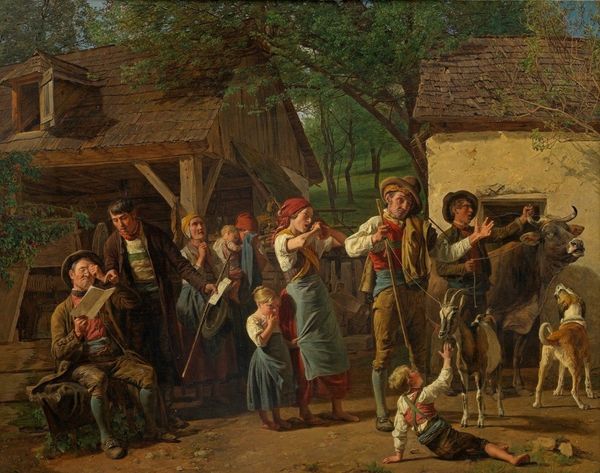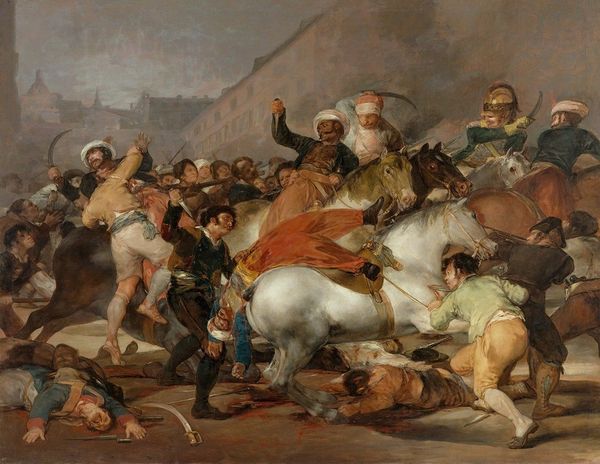
painting, oil-paint
#
narrative-art
#
baroque
#
painting
#
oil-paint
#
landscape
#
figuration
#
oil painting
#
genre-painting
#
realism
Copyright: Public domain
Curator: Here we have Pieter Brueghel the Younger’s work, "Rixe De Paysans," rendered in oil on panel. It pulsates with raw energy. What's your immediate reaction to it? Editor: Chaos. Utter chaos, brilliantly composed. Look at the dynamic poses, the swirling limbs, it practically vibrates. And all those scattered cards! Curator: The scene captures a village brawl, a common theme in Brueghel's work. Such paintings provide insight into peasant life and social structures of the time. Conflict, unfortunately, wasn't uncommon. Editor: I’m drawn to how he renders clothing, the materiality of roughspun fabrics versus the relative finery of that orange sleeve. It speaks to a hierarchy, a clash fueled not just by temperament, but access and lack thereof. And look how thick the oil paint is! Curator: Indeed. Brueghel skillfully used clothing and color to distinguish between individuals and their roles within the community, didn't he? It's interesting that this is a popular topic for art during this period, maybe reflecting the political turmoil that was common in Brueghel's time. Editor: Absolutely, but consider also the physical labour embedded in the making of this piece. Grinding pigments, layering paint to build such vibrant yet grounded scenes of peasant conflict…It’s more than just representation, it’s the transformation of raw material into a potent commentary. And what is the significance of the objects laying on the ground, those broken pieces of pottery for example? Curator: Ah, that touches upon another layer: Symbolism. Objects like broken pottery could imply destruction and disruption. Also those cards, which seems to imply that the fight originated during a card game. Editor: So, more than a snapshot, Brueghel gives us social critique and a story about work, and community… What is fascinating about such a dramatic artwork, is to remember all the many hours in labor it required, which adds to the narrative a whole other level of materiality, if you ask me. Curator: Reflecting on it, the painting shows the many facets of everyday life of a forgotten class, their struggles, their means of entertainment, it brings the common life of 16th-century to the 21st, centuries later. Editor: Precisely. It takes that same common energy and matter and transmutes it, literally, into art. Powerful.
Comments
No comments
Be the first to comment and join the conversation on the ultimate creative platform.

